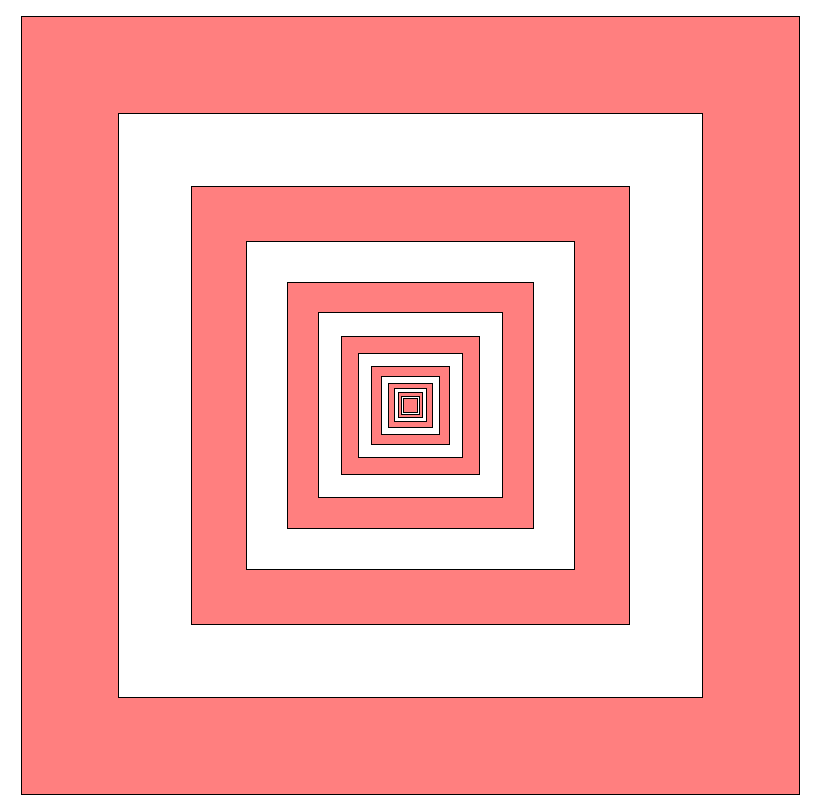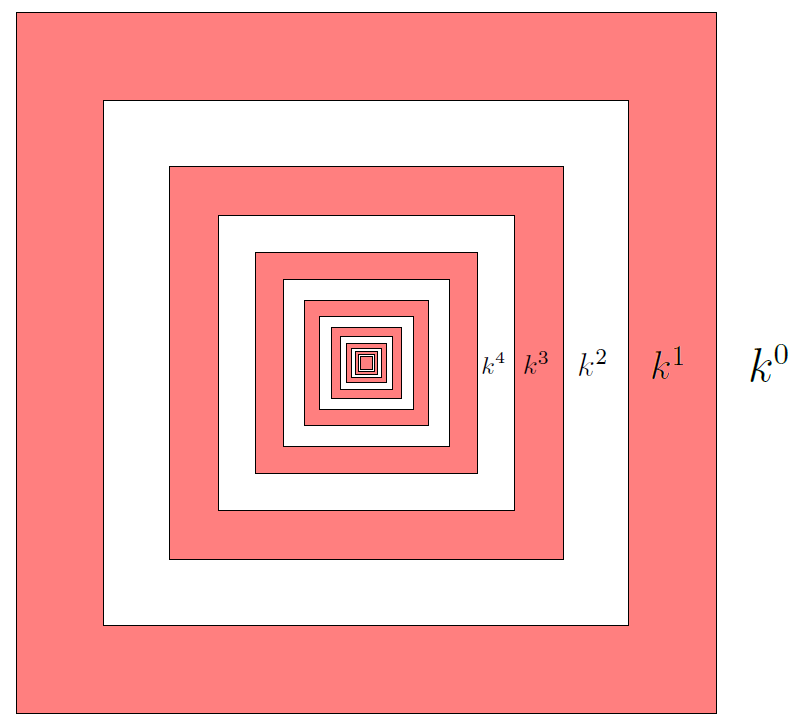¶ 2025 AMC 12A Problem 5
Problem:
In the figure below, the outside square contains infinitely many squares, each of them with the same center and sides parallel to the outside square. The ratio of the side length of a square to the side length of the next inner square is , where . The spaces between squares are alternately shaded, as shown in the figure (which is not necessarily drawn to scale).

The area of the shaded portion of the figure is of the area of the original square. What is
Answer Choices:
A.
B.
C.
D.
E.
Solution:
Let the side length of the largest (outer) square be .
Each successive inner square has side length multiplied by a factor of (), so the side lengths are
and the corresponding areas are
The shaded area, which are the rings, are just the difference between consecutive squares. For example, the first ring is , second , and so on.

Thus the total shaded area (as a fraction of the area of the largest square) is
This is an infinite geometric series with first term and common ratio , so
We are told that this shaded portion is of the area of the original square, so
Therefore, =
The problems on this page are the property of the MAA's American Mathematics Competitions